The WR platform
The name of this platform means Willy Ranger: it all started back in 1982 (despite never wearing a name at the time) and it is still successfully active in its second generation. This platform is iconic of Tamiya because it is one of Tamiya's genes, just like the Grasshopper platform or their Touring World Championships victories are.
Before reviewing it in detail, here are some interesting information about the origins of this iconic platform. Please be advised that the facts occurred long ago, more that 30 years ago: today, it has become very difficult to precisely date several models release, especially when trying to determine which manufacturer was first in inventing this awesome concept of a model popping wheelies as soon as you pull the trigger.
Of course, the goal here is not to accuse anyone of “cheating” or “copying” others: the release dates of the different models are probably only distant of months at best, if not weeks. But the least we can say is that three Japanese manufacturers had the same “inspiration” at the same moment ![]()
OK, here the situation as per the end of 1982 and the summer of 1983:
58035 Wild Willy Willys M38 (1982)
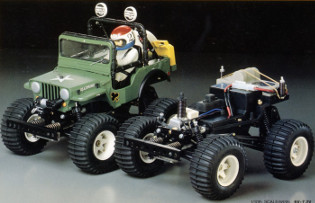
58039 Willy's Wheeler (1983)
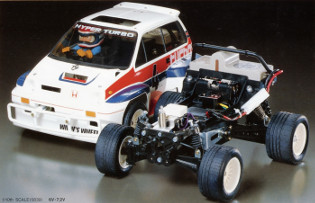
Kyosho Mr Wheelie (1983)

© Marc MAURUS, Auto RCM #23 August 1983
OK, we can't miss the three manufacturers got the same “divine” inspiration at the same period. Tamiya's Wild Willy Willys M38 was precisely released on the 27th of november 1982: this proves it came first, or may be not since the Kyosho Miss Wheelie model release date is uncertain. Indeed, this last model seems to have first appeared in a catalog in 1982, but we don't know neither the release date of the model or the catalog. So, in a few weeks lapse time, or at best months, 3 manufacturers offered 6 models using the same driving concept (Marui also released their Wheelie CJ-7 Golden Eagle in 1983). Somehow, we don't care about who was first or who invented the concept: what matters is that very fun concept was released and that it was tremendously successful. Well, you know what? For good measure, here a 3 more models, these ones being Kyosho's Mr Wheelie sold by Graupner in Germany.

Honestly, hard to say which one of these “wheelies” was the most successful: indeed all these models competed against each other, but all of them sold tremendously well. Thousands of fans around the world discovered the “fun factor” in RC thanks to these models: these were the crazy years of RC, the beloved era when manufacturers dared and tried a lot, and when there was plenty of room for everyone on a very fast-growing market.
Well, next to the historical context, let's focus on Tamiya's Wild Willy: most of all, the WR platform belongs to one character, the charismatic Willy driver. The best artists paint it or draw it with talent:
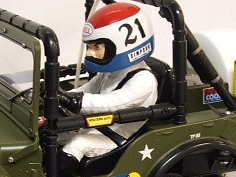
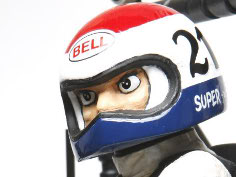
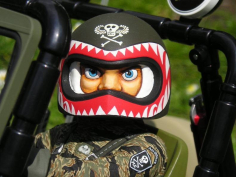
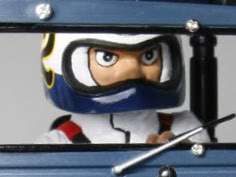
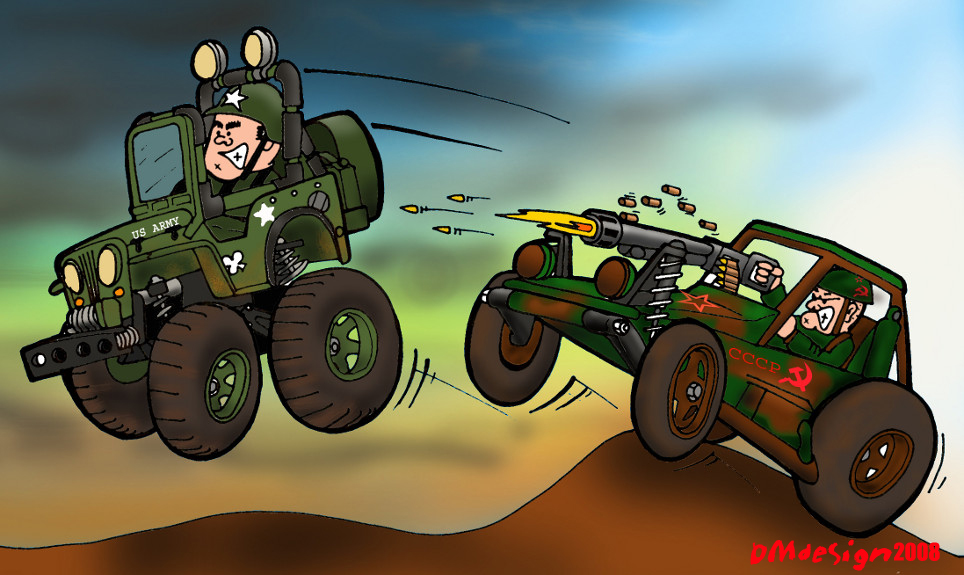
© RA272
Willy is an awesome idea Tamiya designers had at the beginning of the 80's: they created a character that personifies a whole series of models (despite some very recent exceptions). Above all, somehow Willy has the same power on sales than the Volkswagen Beetle bodyshell when Tamiya puts it on a chassis: huge success!
So the WR platform history started back in late 1982 with the first “Willy”:
58035 Wild Willy Willys M38 (1982)
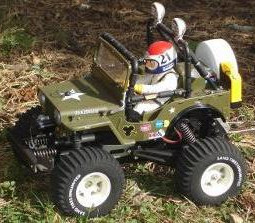
Wild Willy in action
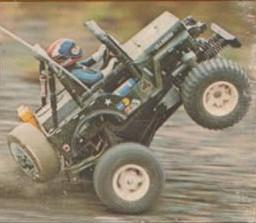
Willy's Wheeler in action
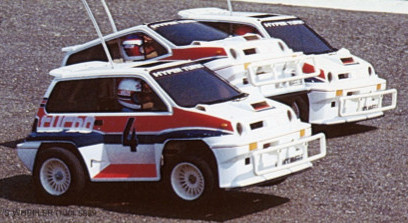
The Wild Willy had a two-phase production run, the first one until 1986 approximately, and the second until the end of its career. The second production run introduced more solid plastic parts on the front of the chassis (especially the damper stay that was fragile) and several improvements in the gearbox (housing, motor mount and the rapidly-wearing aluminum gears were replaced by longer-lasting plastic ones). The wheelie bars were also replaced and the overall chassis wheelbase was made a little bit longer in order to make it more difficult for the model to roll on its roof.
Willy in photos is nice, but it is better in video! (more videos can be watched on my Youtube channel)
Promotional video of the Willy's Wheeler (© Tamiya)
Promotional video of the Wild Willy (© Tamiya)
Willy's chassis was also borrowed by two more conventional models using a longer wheelbase variant with a relocated battery pack that made them loose the wheelie ability. By the way, they also lost the benefit of Willy driving them, which may explain why they did not sell as well as Willy-driven models:
58036 Audi Quattro Rally (1983)
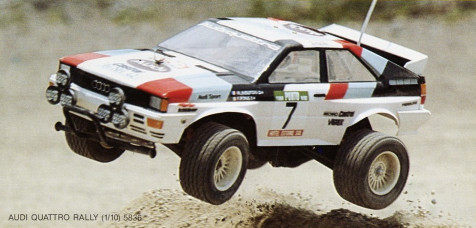
58037 Opel Ascona 400 Rally (1983)

Willy's Wheeler short chassis
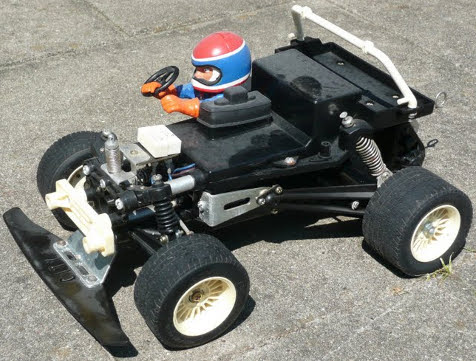
Audi Quattro long chassis

Despite this longer wheelbase chassis variant being more stable, the suspension remains basic, making the vehicles bounce like grasshoppers. As a matter of fact, this platform can be considered as an ancestor to the Grasshopper's, especially the rear drivetrain equipped with a differential, a first for a Tamiya off-road model. The gears are located into a rear solid axle quite similar to the Grasshopper's, except the attachment to the chassis using two massive plastic arms: this would be simplified and made lighter for the Grasshopper. But not only that: the overall chassis design will also serve as a basis for the later development of the Lunch Box chassis, the one much later named CW.
This is the end of this chassis story that will be removed from Tamiya catalogs by the end of 1987. Even though this is only a guess based on what follows, Tamiya seems to consider this chassis was the WR-01.
Indeed, Willy makes a sensational comeback in 1999 under the name of Wild Willy 2, this time using an entirely new designed chassis named WR-02:
WR-02 chassis

Fully-equipped chassis view
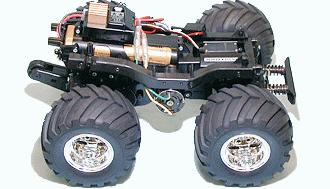
Boxart
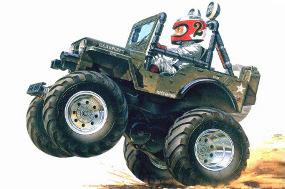
58242 Wild Willy II (1999)

Willy stretching wheels
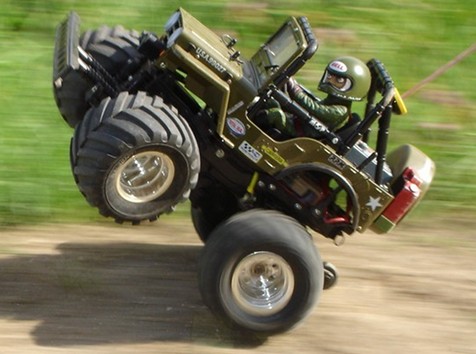
Promotional video of the Wild Willy 2 (© Tamiya)
Willy hasn't aged a day, the bodyshell remained almost untouched and the concept is still the same: pure leisure use, wheelies and a lot of fun. What is new is the chassis that was specifically designed for this model, even though it borrows some parts from others. In fact, the Wild Willy 2 can be considered as the first of all Tamiya re-releases, at least the “modernized” ones. Of course, fans will welcome the new version and make it a huge success, again.
But that's not the end of the story: in 2011, Tamiya (finally!) decides to offer Willy other vehicles do drive, and then to lend the WR-02 chassis to other characters to offer new style variants.
58512 Volkswagen Type 2 (T1) Wheelie (2011)

58531 Suzuki Jimny (SJ30) Wheelie (2012)

58611 Honda City Turbo (2015)
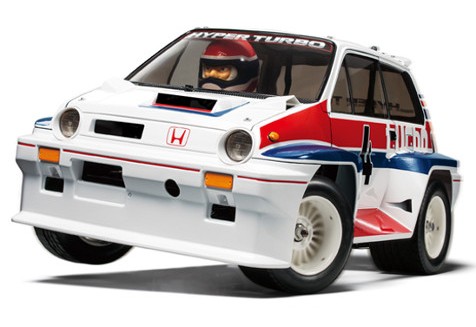
58589 Toyota Land Cruiser 40 Pick-Up (2014)

58556 Farm King Willie (2013)

58586 Tumbling Bull (2014)
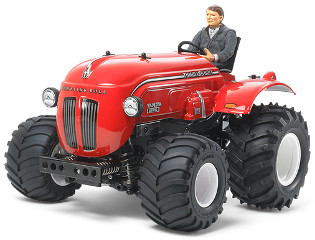
58601 Tractor Kumamon Version (2014)

A few details:
- only the two first models use the Wild Willy 2 WR-02 chassis and are driven by Willy
- Willy drives the Honda City Turbo (Willy's Wheeler) that uses the WR-02C chassis variant (longer wheelbase)
- Willy also drives the Toyota Land Cruiser 40 Pick-Up, but this model uses the GF-01 chassis, some kind of 4WD version of the WR-02 that we will review later
- the 3 last models are not driven by Willy but they use the WR-02G “tractor” variant of the chassis (big wheels at the rear)
All these models are successful, both when Willy drives them or when they use the same chassis or either variant. What they all share is a non-conventional driving style, another way of enjoying RC, just like at the beginning of the 80's with the first generation.
Conclusion on the WR platform
Apart from the question about who created this specific concept of vehicles, the “wheelies” introduced a very popular fun factor into RC at the beginning of the 80's. Tamiya's Wild Willy actively participated to this and introduced in addition an iconic character. Above all, this character left its footprint in Tamiya's offering up to now.
Indeed, the 1st WR generation (or “Willy platform”) will have several side effects for Tamiya:
- full scale-realism is no longer a requirement for a model to be a huge success: still, the bodyshell is highly-detailed, but Tamiya learnt they could take liberties with the chassis
- after some modifications, the rear solid axle will equip another very important platform in Tamiya history: the Grasshopper's
- in turn, the GH platform will pass its modified rear end on to the CW platform which is also very important since it is the Lunch Box's
- last but not least, the WR chassis will also be modified to become the Lunch Box's
In the end, in addition to being a huge success, the first WR generation has passed on many genes on to the GH platform, and more directly, Willy's chassis will be the basis of the Lunch Box's, another huge success for Tamiya.
When Tamiya decides to reboot Willy in 1999 with an all new chassis, again the success is huge. But we'll have to wait patiently until 2011 for Tamiya to re-use Willy and its WR-02 chassis to restart the platform career with new variants. And again, still with success.
Related articles:






